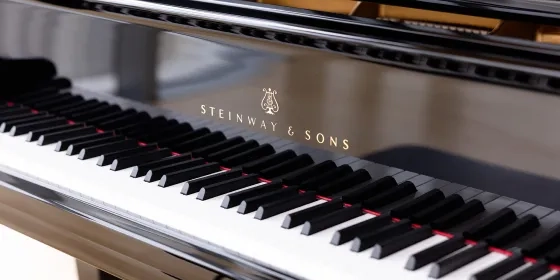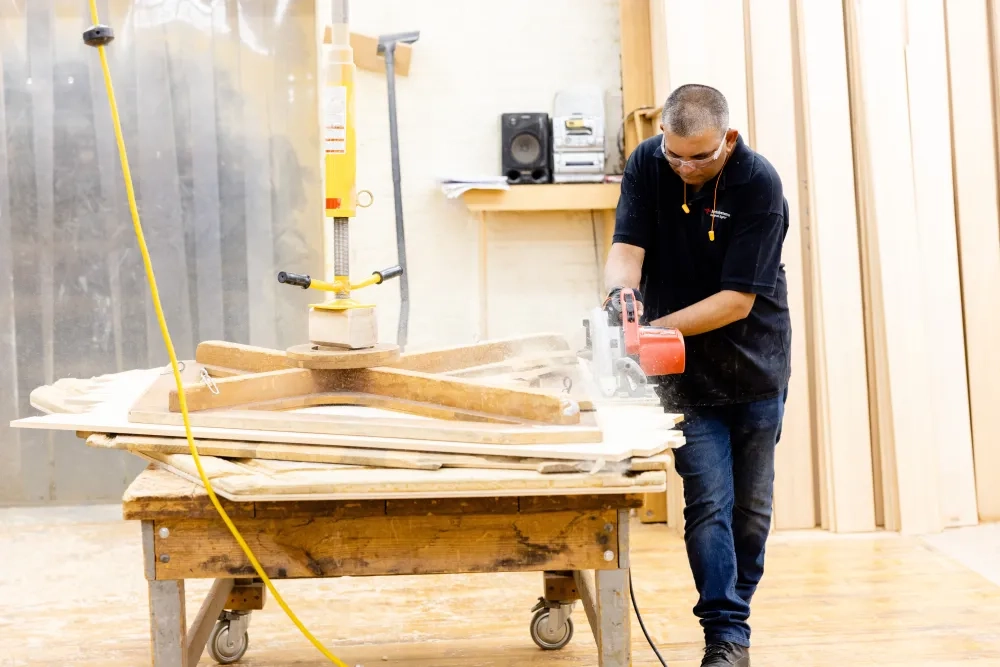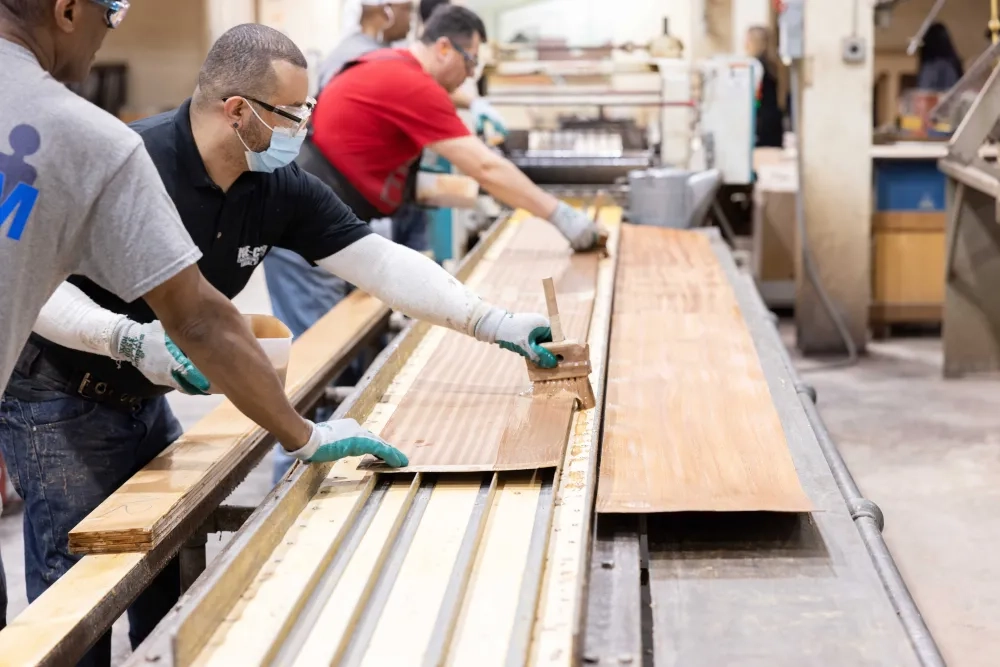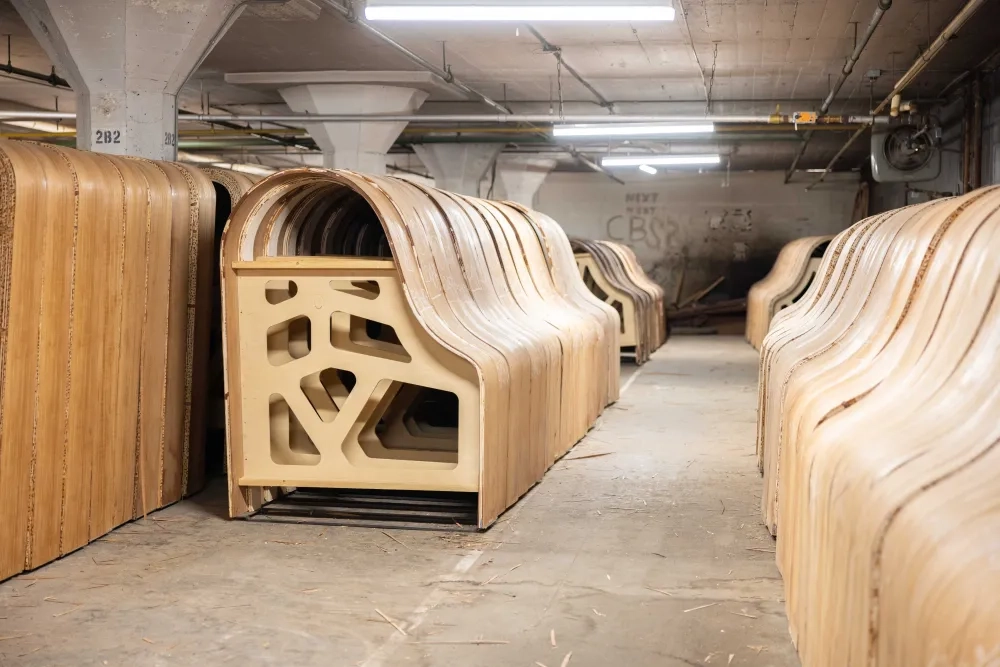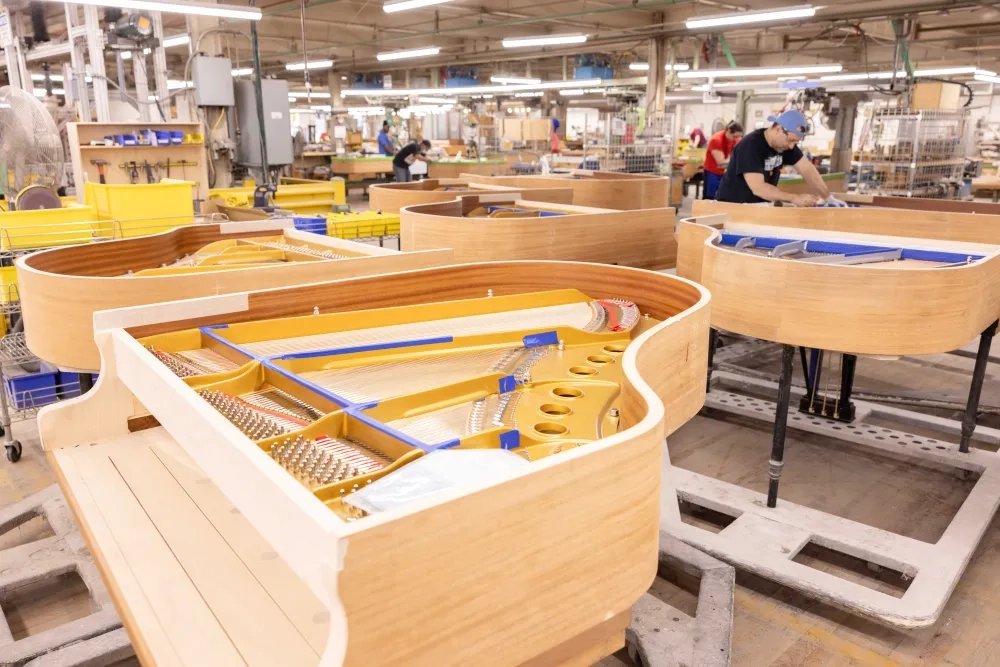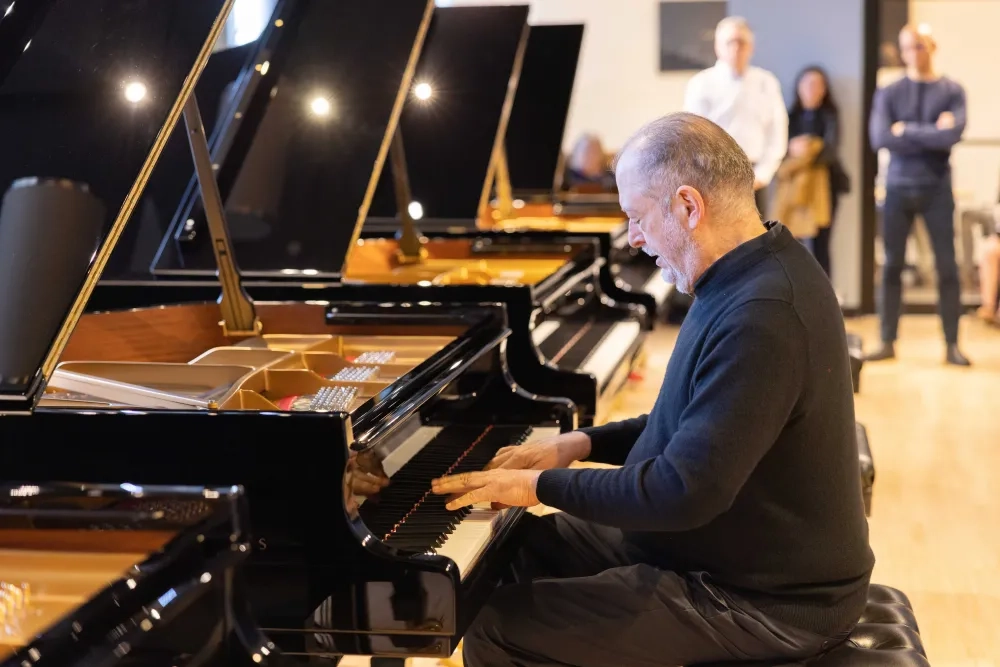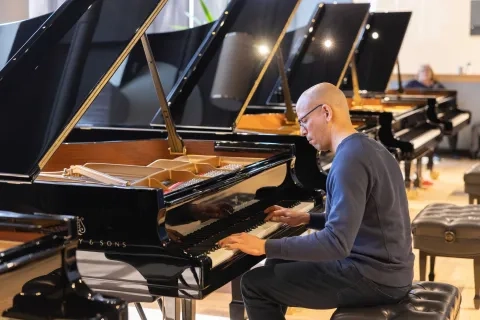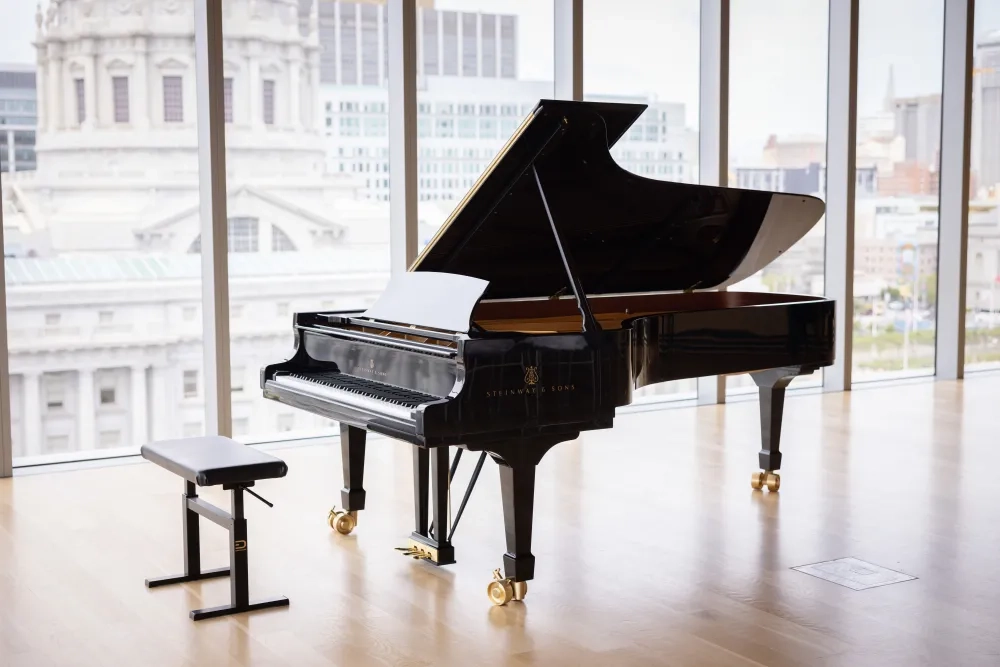Under the Lid: One Steinway’s Journey to SFCM
From tree to concert hall: SFCM piano faculty Garrick Ohlsson and Edward Simon explain the process of selecting the school's newest Steinway piano.
By Alex Heigl
Over 10,000 moving parts. Two years to age the wood. And approximately 365 days to put together, give or take. While it’s impossible to distill the magic of a Steinway grand piano into numbers, those figures are as a good place to start as any.
Ohlsson and Simon visited Steinway’s U.S. factory in Queens, New York in April 2022 to put some of the iconic instruments through their paces and decide which one would be making the cross-country journey to its new home at SFCM. (Though the Steinway family came to America from Germany, the New York facility actually predates the Hamburg one.)
Opus 3 artist Ohlsson—a Chopin International Piano Competition winner—explained that there are a few test passages he returns to whenever he’s called upon to “audition” a piano that showcases “different things a piano can do across its range.” But he said that he’s also arrived at one particular note as part of the testing process: the A an octave above the “tuning A” (440 hertz).
"By testing a treble note like that, up in the soprano range of singing, you hear how the piano vibrates in a critical area. In a concert grand, that's traditionally the area that can go a little short: It can be a little unsatisfying as the melody rises and sustain a little bit less and get thinner.”
Ohlsson added that he and Simon had to be “as poker-faced as possible” during their testing so as not to immediately reveal their preferences as they put the instruments through their paces, which can be difficult as very human factors like ear (or finger) fatigue also come up. “It’s about personal taste,” Simon said, “it’s not this is a good piano and this is a bad one, it’s a very nuanced and delicate process.”
“We as teachers really are trying to convey the importance of listening to the sound that you’re producing to our students because music-making is essentially about sound-making. It’s about the listening,” Simon added.
Another important consideration in the process is the Steinway testing room itself: While it’s large enough to accommodate eight or nine concert grands, each piano’s position in the room colors its sound in different ways, so as they’re moved from spot to spot, that effect has to be taken into account.
“The pianist, actually, in some ways, hears the least attractive sound from the instrument,” Ohlsson said. "The way the vectors of sound come out of a concert grand, it usually goes straight ahead of where your face is and then out towards where the audience is, so the people in the non-keyboard seats get the best sound. It’s very useful to have another pianist, even one in a different idiom, working with you.”
“When you play a note on an instrument it changes character, from the moment the hammer strikes the strings, to the moment of the decay of the tone,” Simon said. That change is mirrored by the life of the instrument itself: The tension of the piano's strings and soundboard will relax over four or five years and the felt of the hammers will soften, affecting its attack. It's a process Ohlsson compares to how a singer's voice "opens" as they grow older.
“That is the beauty of a handmade instrument, is that they each have their own personality,” Simon said, adding that, “finding that one match for a pianist is sort of like finding your soulmate that you’re going to marry and spend the rest of your life with.”
Students and visitors to SFCM can see the new Steinway in the 200-seat Barbro Osher Recital Hall on the 11th floor of the Bowes Center, where it arrived May 26. Learn more about studying piano at SFCM.
